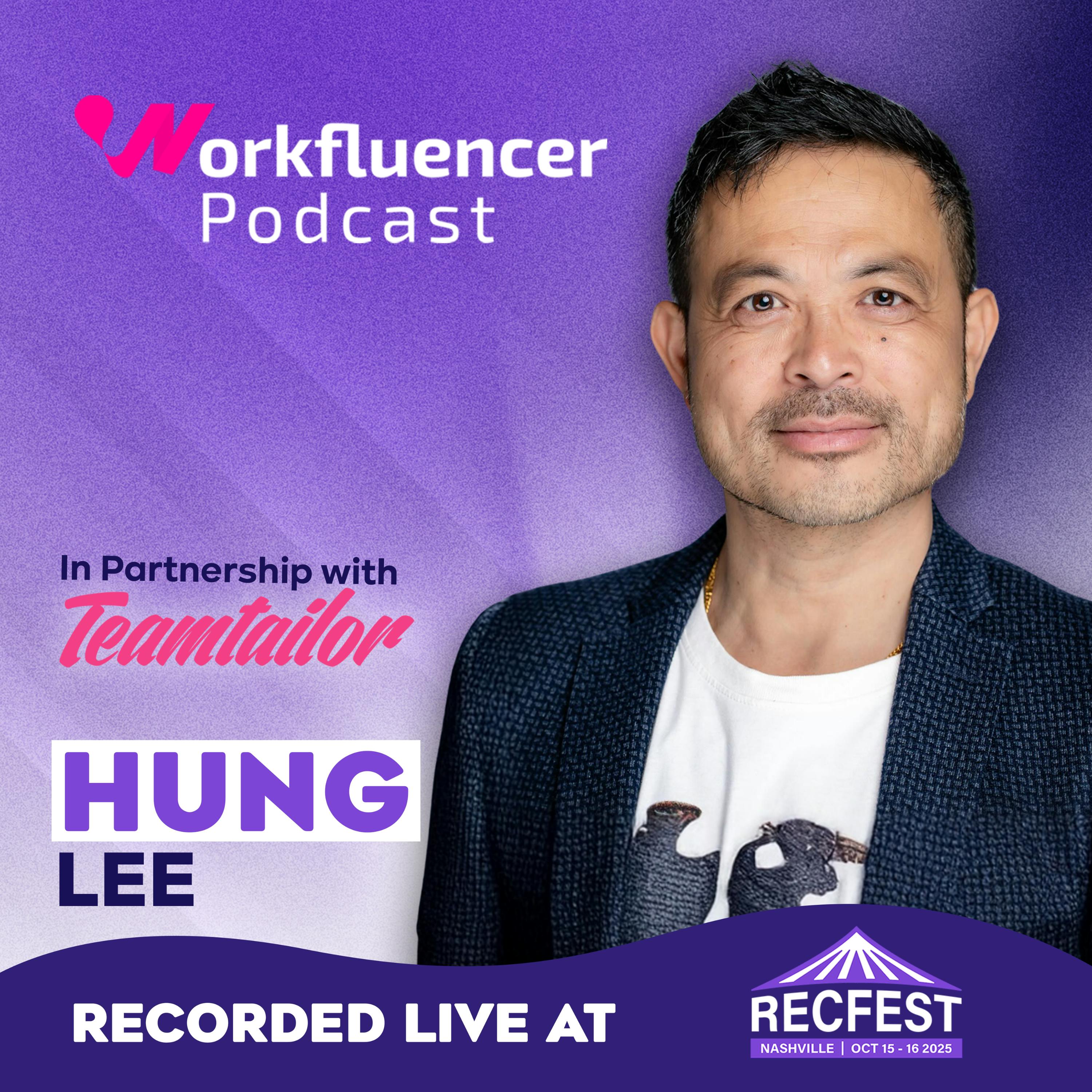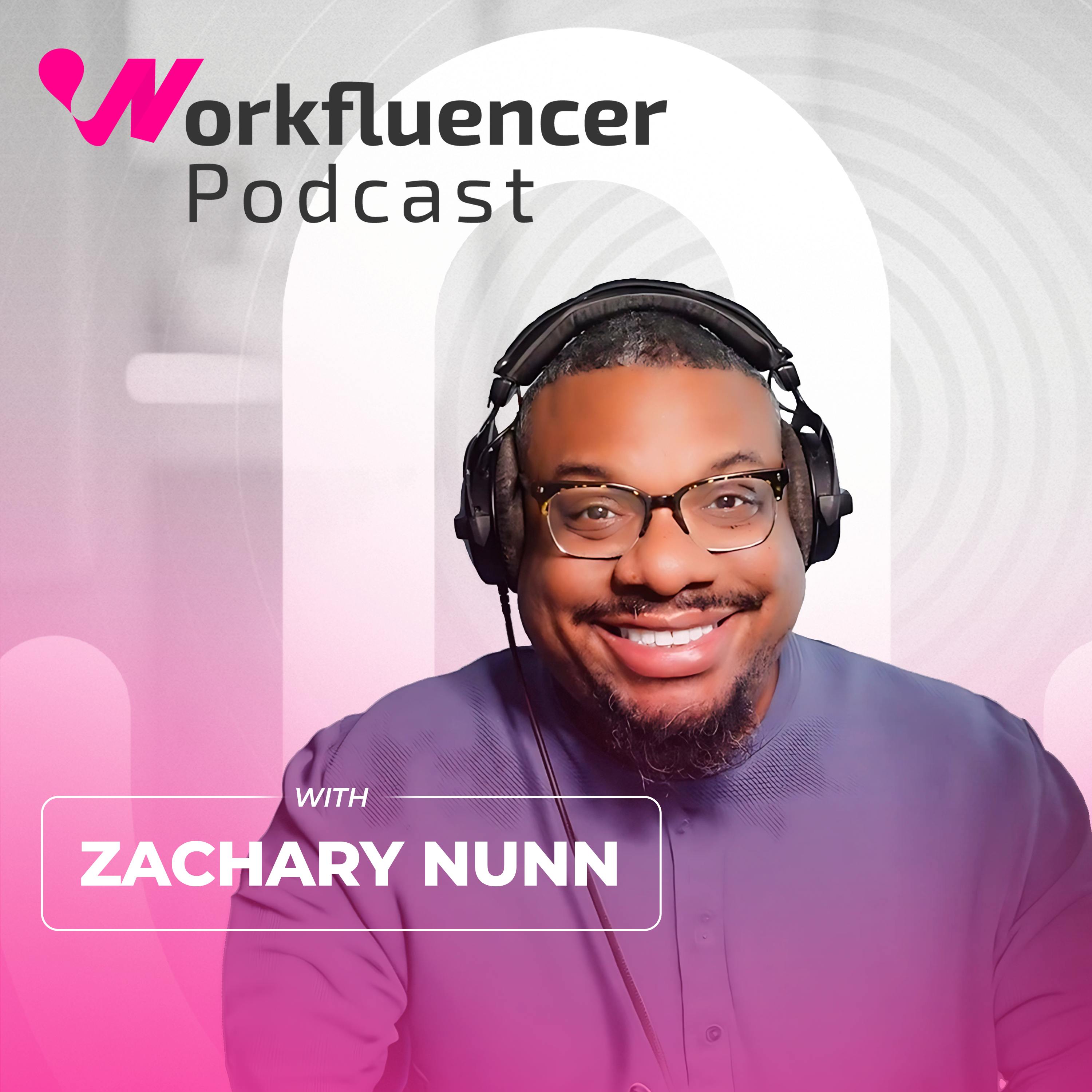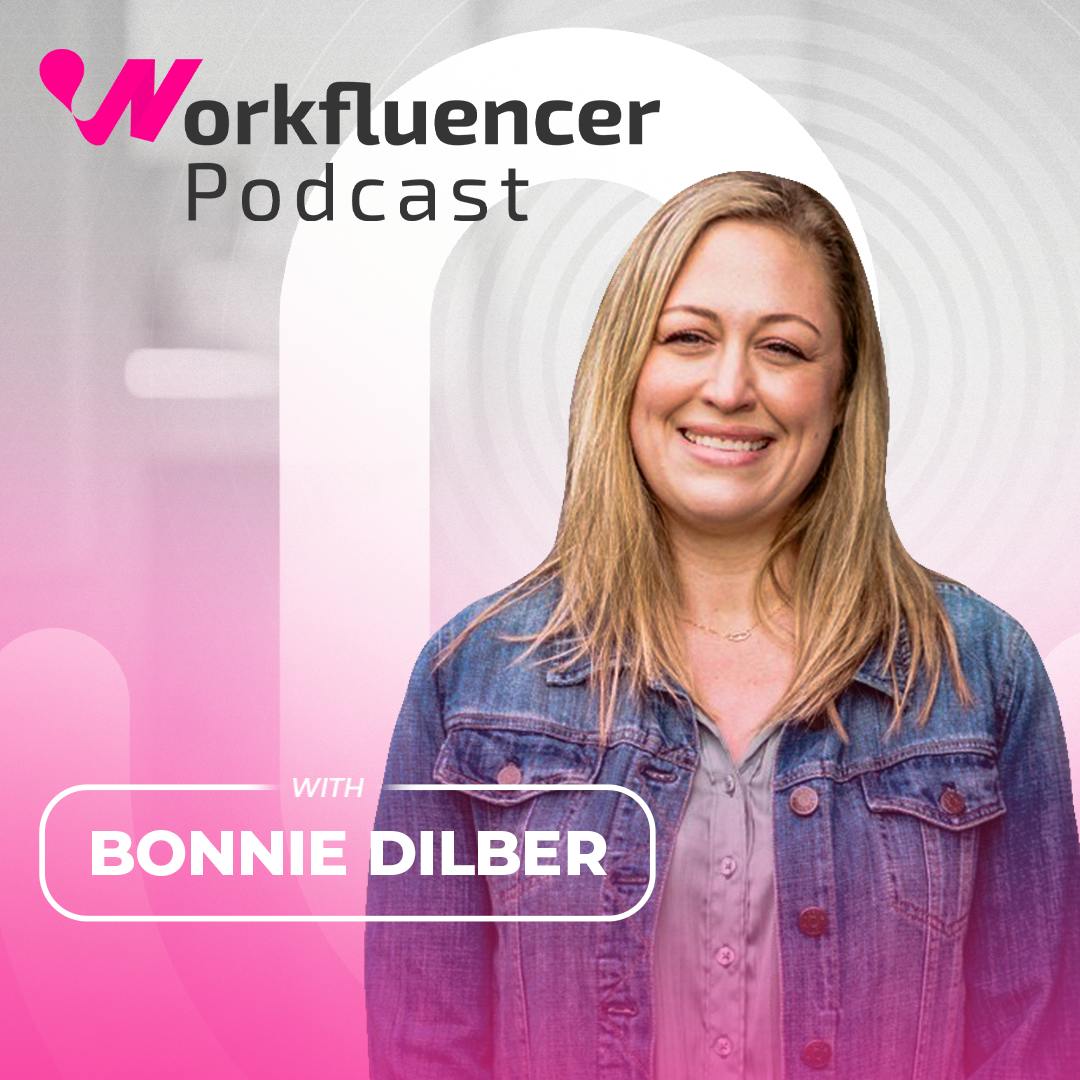Data-Driven Recruiting: How to Leverage Insights for Better Hiring Decisions with Tara Noonan Amaral
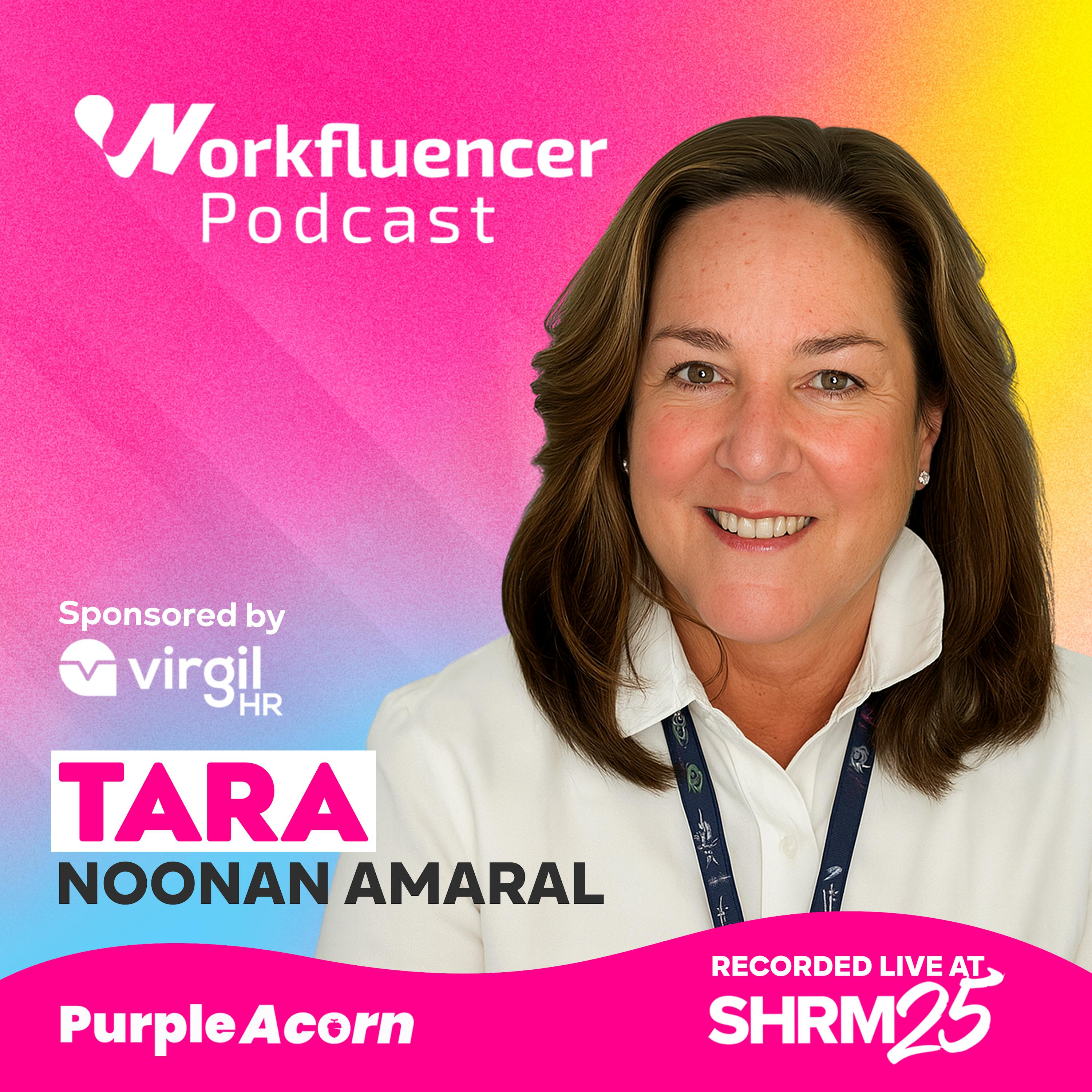
In this bonus episode, recorded live at SHRM 2025, Rhona Pierce interviews Tara Amaral, a veteran talent acquisition expert. Tara shares practical strategies for building effective recruiting functions, highlighting the importance of simple, repeatable processes, data-driven decision-making, and thoughtful change management. She discusses how organizations of all sizes can optimize hiring, leverage technology and AI wisely, and foster strategic partnerships. Tara emphasizes the enduring value of human expertise in recruitment, offering actionable advice for leaders and recruiters navigating today’s evolving talent landscape.
This episode was brought to you by VirgilHR, The all-in-one SaaS solution that empowers HR professionals to make smart, compliant employment decisions in real-time.
HR compliance doesn’t have to be a headache.
👉🏾 Schedule a demo and see how easy it can be: https://link.rhonapierce.com/VirgilHR
****
Connect with Tara on LinkedIn: https://www.linkedin.com/in/taranamaral/
Learn more about Riviera Advisors at https://rivieraadvisors.com/
****
💜 Leave a review on Apple Podcasts
https://podcasts.apple.com/us/podcast/workfluencer/id1740429498
🟢 Leave a rating on Spotify
https://open.spotify.com/show/4R6bJ4JZpqOlFdYelWwsBr
SHRM 2025, Talent Acquisition, HR, Data-Driven Recruitment, Change Management, AI in Recruitment, Intake Calls, Recruitment Strategies, Employee Engagement, Hiring Process, Recruitment Technology
Rhona Pierce (00:07)
Welcome everyone to Purple Acorn Live brought to you by Virgil HR. We're live at Sherb 25 in San Diego and I'm here with Tara Amaral and I'm excited to talk to you today. How are you doing today?
Tara Noonan Amaral (00:20)
Doing great. It's beautiful weather, great location. Everyone's been very helpful.
Rhona Pierce (00:24)
Thank you so much for joining us. So for folks who aren't familiar with you, can you give us the 30 second elevator pitch?
Tara Noonan Amaral (00:31)
Sure, I'm a HR convert now for almost 40 years and really enjoying myself in this profession. I have a niche specialty in all things talent acquisition to help organization optimize that. I live near the beach in Charleston, South Carolina where I'm vacated in New York and New Jersey and really enjoying myself. Perfect.
Rhona Pierce (00:54)
think we need to have it a little
Tara Noonan Amaral (00:56)
closer.
Rhona Pierce (00:58)
So you've built tallying acquisition in some massive organizations. ⁓ What does a strong foundation for the tallying acquisition function look like in practice?
Tara Noonan Amaral (01:10)
Yeah, so I think the biggest thing we work, I've always looked for is making sure that there's a simple, repeatable process and that people understand the value in something that can be predictable. Everyone sort of says, I can do it my way. When you're working for any organization, when things are out of process, convoluted, you leave yourself at risk from a couple of standpoints. One, there's a compliance risk, right? So that in and of itself.
The other thing is you really leave candidates not knowing what to expect because sometimes they might interview with you a couple of times and if you can't set clear expectations for them regardless of what the labor market is, you're creating a negative experience for them. And so having a simple, repeatable process that can be explained and endorsed by everyone along the way is very important.
Rhona Pierce (02:00)
And I love that you said regardless of the labor market because so many times people think that we have one process when we're hurting for candidates and another process when we have an excess of candidates and it really should always be the same. And I like that you focus on the simple and repeatable. ⁓ For smaller organizations who think, we don't really need to do all of that. This is for huge companies. What would you say to them?
Tara Noonan Amaral (02:30)
No, I think it's actually even more important and you don't have to have a fancy technology to do it. You just have to have a rubric and a process that can be clearly explained. Obviously you have to have checks and balances to make sure that you're not doing anything. I always say to clients, you don't want to end up in the newspaper for the wrong reason. And so making sure that you've got something that can be easily followed is very important. And training people also about why it's important to do things a certain way. It also doesn't mean that every single job gets repeated.
gets recruited in the same identical process. You may have an early career process, a mid-career process, a senior process, but each of them has to have clarification.
Rhona Pierce (03:11)
And as I was preparing for this interview and reading about you, I learned that you're very big on like facts and on data, which is my love language. ⁓ How do you, how does that look like in real life?
Tara Noonan Amaral (03:25)
So there's a couple things. You can listen to the recording of my session I did this morning, which also has some giveaways on important data in the people process, which is good. There's a primer on the types of things you want to look at. ⁓ It really starts with knowing your organization. Forget about the recruiting part. Understanding ⁓ what are your people skills? ⁓ How do people migrate careers within your organization? And you can track all of that today, even if you're a small organization. Mobility studies.
asking focus groups about where people want to go. And then you really start to use that data to craft a story around, well, if we have this group of skills now and we need another group of skills later, how do we get current employees to bridge that gap? We train them, have them go back to school on the job training. And then if we're still having a gap, how do we recruit that skill from outside the organization? So you really have to know where you stand today and understand how do people move across your organization.
in order to be able to feed the funnel at the right time.
Rhona Pierce (04:25)
If I'm an organization, yes, I understand what you're saying, but I have no, I'm not tracking any of that. Where should they start?
Tara Noonan Amaral (04:33)
I think you just have to talk to people. Have a couple of focus groups with employees that have a little bit of tenure with you, have had a couple jobs or two, and you can usually tell that. And ask them, where did they start and why did they move? And did they have skills from job A that helped them in job B? There's a natural progression to go from customer service into operations, from operations into implementation. And so you can see some natural transitions. But talking to your employees, because they are the voice of what the company is going to be, is a good place to start.
Rhona Pierce (05:03)
I love that. So simple, so practical. like, I don't think everyone's thinking about it because we always think like, well, I needed the technology and I needed this and I need this to measure, but no, talk to.
Tara Noonan Amaral (05:13)
people. So I mean one of the things we find is that companies often over buy technology and so when we come in at Revere Advisors to talk to them about what's working and what's not, we often find that they've left a lot of functionality yet to be used, right? And then they want to add more functionality on top of what is the hot, know, shiny new penny and you really have to say what do I need now and why does my organization need it? Some of may not be ready for some of this or maybe they
thought they were and it failed and then they're a little gun shy and they don't want to do anything else. You really have to constantly reevaluate what's right for you now.
Rhona Pierce (05:52)
So switching gears a little tad bit, change management is a big part of TA that really doesn't get talked about enough. But for us to be able to enact change within an organization, the org really has to be ready for it. How can you know when your organization is ready for change, and how can you prepare them for
Tara Noonan Amaral (06:09)
it. How you know?
So I think if we talk about the TA organization itself, there's ⁓ a trend in the industry to go from being order takers to being advisors, right? And so that's a different skill set from a recruiter just saying yes to anything a manager wants to do. So how do you prepare that team to get up skilled to be talent advisors? Jeremy is actually doing a session on that tomorrow at 11 o'clock.
And it really is a collaboration on making sure that you're having honest conversations about recruiters, because sometimes it's very easy to get comfortable in administrative work, but you really want to show up as an advocate. So it's soft skills, it's research skills, it's conversational skills to really advise your business partners and managers on what they should be looking at and what the market bears. So that's one piece. Then there's a whole other side of being able to collaborate with your HR business partners, your generalists, your compensation leaders.
to understand, here's what we're seeing in the market, but they may come to the table with different information. And so how do you become an influencer without having direct accountability for the coalition that you're really working with? So in the TA function, the flip side of that is you have to get managers to come along with you, right? So a manager may say, I want the exact same person that just left me. And then you're saying, well, you know, there's a little bit different way. So you have to be able to influence them about, why do you want to replace the role? How do you have to do it?
what's changed in your organizations, you have to get them to come along and see things differently as well.
Rhona Pierce (07:46)
And
that's the fun but hard part, I guess. When you work with organizations that are like ready to do this, where do you guys like start? What's the biggest resistance that you guys see at the beginning and how you help them?
Tara Noonan Amaral (08:03)
So the biggest resistance get is everybody thinks that the process they have is the one that's best. So we have to really identify how do you take the best of what's working and then maybe leverage it across the entire organization because there could be good pieces. Sometimes it's because one division isn't funded as much as the other division and it's really taking the best of greed in the processes and getting everybody to rise up to a new level of service. So that's one of the established commonality.
give everybody credit for what's working well, but then really pick the best so that for that organization, can optimize what you need. So that's one piece. And then really having a partnership with your HR business partners. Sometimes it's just the same person, right? It's the recruiter and the business partner. So you really have to be able to talk about that we're here to enable business success. This is not just about the recruiting function. The recruiting's job is to help build organizations based on a business strategy and business goal. So you have to establish commonality there and get everybody on the same team.
amazing.
Rhona Pierce (09:02)
I'm sure technology plays a part in all of this and we've spoken about earlier about how companies over buy. But like with AI and everything that's happening now, how can organizations like really understand what technology they need and when they need to incorporate it?
Tara Noonan Amaral (09:20)
into
this. Yeah. So I think the biggest thing is they need to understand what their current state is or what their process is today. And again, have it clear and repeatable because when you're going to overlay AI or integrate it, you have to know what you're taking out and you can't take out variation on every single thing. That's why having something foundational becomes really important. Remember in most AI situations, you have to teach it things.
So you can teach a whole lot of variation and so that's why understanding what great looks like is an important part. However, there are certain things that you can look for, machine learning or AI to take out administrative tasks pretty easily, but everyone has to agree on what administrative tasks are we taking out. know, interview notes, scheduling conversations with candidates, scheduling deep recessions, all can be done with automatic writers today. That could be a huge time saver.
that I think everyone's subscribing to in different parts of how they're doing their day job anyway. And so, you know, look for the early wins that are not going to disrupt things. And then lastly, on that topic, you need to know what great looks like. So if you're going to use AI to do decision making, you have to actually feed in the facts about why you're making those decisions. You just can't put it in and not have a base understanding of why you're doing it in first place.
Rhona Pierce (10:40)
With so many vendors out there and we're here at Shurm with a huge expo, it can be easy to get shiny object syndrome. How do you know what administrative tasks really should be handed over to AI and maybe some you should keep?
Tara Noonan Amaral (10:58)
So I think the biggest thing is, are they repeatable? So if you're having the same conversation over and over again, if a recruiting coordinator is doing the same thing, think about what can be automated so that person can do more value-added work where there's going to be more variation. So that would be one piece. So you really have to look at the process. We do something called the desk review, where I literally have screens and watch somebody work.
and look at what are they doing inside tools, what are they doing outside tools, how do they use Teams or Slack or email to understand what's repetitive and what's not. And then you start to identify the things that can be automated or you can infuse AI if there is a good solid tool that can be legally dependable as well.
Rhona Pierce (11:42)
A lot of TA teams want to get more strategic, want to get ⁓ more involved with using data, but it's such a big undertaking if you think of it. If someone listening wants to start having their TA org be more strategic, more data driven, what should they start tracking today?
Tara Noonan Amaral (12:01)
⁓
So the biggest thing is the applicant tracking system that they're using, even if it's a Google spreadsheet, ⁓ has a lot of information that is critical to being able to tell a story about how good they are at attracting talent, screening talent, how long an interview process take, how many offers are accepted. I would start with that and the cycle times for those things as your first data point. You don't have to do the world.
But start small with a job that you recruit for often so you can start to look at what's the normal range and then start to benchmark some of that. So that's kind of baseline. I like to say if you're ready for stage two, send out surveys to three constituents. One is candidates who accept your offer. The second is candidates who have not accepted your offer or who made it through a certain, like maybe the interview process and you know, why did they turn us down or why did we turn them in? How happy were they with that process?
And then you do have to ask managers about how they thought the recruiting process was. Remember, they're making the hiring decision, so they're not gonna, you know, knock themselves on the back for making a bad hiring decision. But they should have a feedback as to what worked well and what didn't, because oftentimes we find the setup for an excellent recruiting process and all those submetrics is the initiation of what we call an intake call, where everybody sets guidelines on, here's what we're gonna do and this is how we're gonna do it.
And from that, you can have a really great process that you can measure along the
Rhona Pierce (13:31)
Let's talk a little bit more about intake calls because I think that a lot of, I don't think, the people I've spoken with usually see those as an order-taking call. And I think the way how you set the tone in an intake call really sets the tone for the entire process. So how can recruiters be more strategic starting with their intake call?
Tara Noonan Amaral (13:53)
So I'm going to give another plug for my colleague Jeremy because tomorrow he's actually doing a session on this at 11 o'clock. So it's a good one to take. ⁓ So I think the biggest thing is that you have to show up as an expert. Right. So you can't just show up and say, what do you want me to do for you? Right. Because that's like delivering a cup of coffee. That just doesn't make any sense. You have to come in with an understanding of what do we think they're asking for? Understand what the market's bearing. Show them some comparable resumes.
of people that say, is this what you're looking for? Have a conversation, understand what the competition is, and understand the markets that they may want to go to. And then have a dialogue with them. From that, you have to lay out roles and responsibilities. Here's what I'm going to do, here's what you're going to do, here's the compensation we're talking about. And then come back to them and make sure that there's an agreement on this is how we're all going to show up as we move forward. It takes a lot of work and it takes a lot of influencing. You have to be able to say, I'll get back to you is one thing. Sometimes you have to be able to say no.
and we can help you do something else. And you have to really show up with your profession at the table.
Rhona Pierce (14:56)
Stand in your power as the subject matter expert in high
Tara Noonan Amaral (14:59)
Otherwise
they're doing your job for you and that doesn't make any sense. Exactly.
Rhona Pierce (15:03)
that's
when you get these, recruiters are gonna be replaced by AI. Yeah, because if you're not doing, adding this type of value, then it is something easily replaced.
Tara Noonan Amaral (15:13)
Well,
the sourcing part of it is, but the screening part after a certain part, I do think you still want to have somebody who's understanding what are those soft skills that you're working for as part of this process and even some of the hard technical skills, somebody in the job, in the department's going to do. But you can do a lot of that, if there's a common understanding of what you're looking for. You can't do it if it's just based on, I think I want this, because that's a waste of money and time. And time. Amazing.
Rhona Pierce (15:41)
So I like to do something, just rapid fire questions. First thing that comes to mind. Are you ready? It's one recruiting trend you wish would die.
Tara Noonan Amaral (15:54)
⁓ this post and pray. I think that people are too rely a lot they rely too heavily on LinkedIn and other mass distribution networks that you really have to pick up the phone and call people at a certain point.
Rhona Pierce (16:06)
Yes, biggest waste of time in most recruiting processes.
Tara Noonan Amaral (16:11)
the back and forth with managers to get feedback. It takes forever. I don't know why managers spend time interviewing and they're very shy about giving their thoughts on the process.
Rhona Pierce (16:22)
What's one thing most leaders overcomplicate?
Tara Noonan Amaral (16:27)
⁓ I think the offer process. think if you, you know, again, if you have a good intake session at the beginning, then you should have, you know, a rubric on here's what we can do, but there's often a lot of back and forth at the end, even on job ⁓ positions that you offer over and over again. That can clearly be simplified. Senior executives might be a little bit different, but on common things, there shouldn't be that much back and forth on offer letters and other things like that. True.
Rhona Pierce (16:52)
⁓ So I've enjoyed this conversation. Is there anything that I haven't asked that you think listeners should know?
Tara Noonan Amaral (17:00)
So I think the biggest thing is that AI has been such an overlay in the recruiting world. I still think that recruiters who are excellent at their jobs and have that advisory mindset can be a differentiator for an organization. And we can't just say, I'm going to use chat GPT for everything. That's not going to make you a better advisor. You still have to show up, know the business, know your manager, and know the market that you're recruiting.
Rhona Pierce (17:26)
Amazing. How can listeners connect with you?
Tara Noonan Amaral (17:29)
So I'm on LinkedIn.
I have actually a calendar link on my profile. They can find me there. I'm on the Riviera Advisors website. My full bio is there. They can reach out anytime that they want.
Rhona Pierce (17:40)
Perfect. Thank you so much for joining us.
Tara Noonan Amaral (17:42)
Thanks having me. ⁓
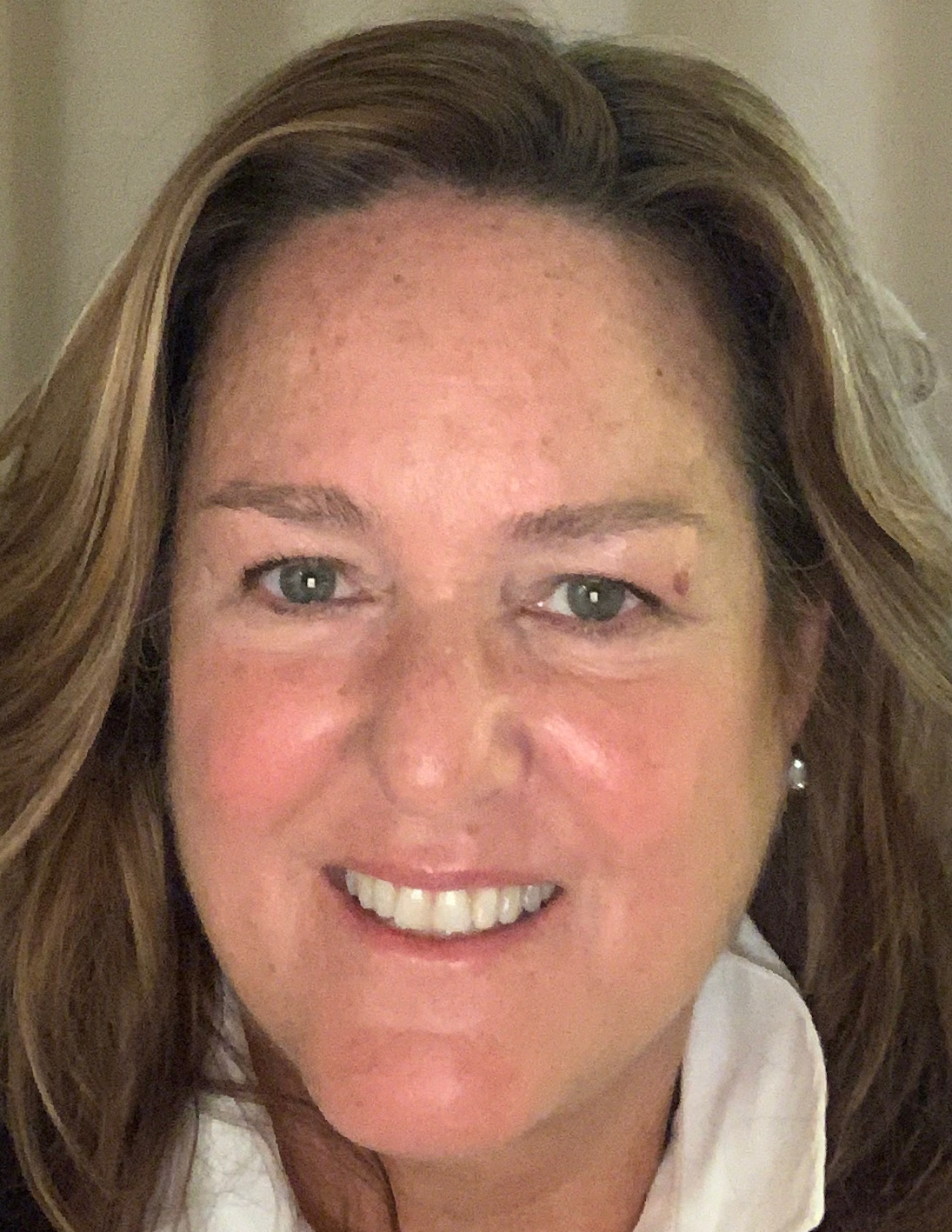
Tara Noonan Amaral
Principal Consultant
Tara N. Amaral brings several decades of talent acquisition and leadership strategy expertise to Hellman & Friedman. Tara has had an impressive career in recruitment, diversity and strategic talent acquisition for some of the most successful organizations in the world including: Riviera Advisors, Marsh & McLennan, Fidelity Investments, New York Life, ADP and AON/Hewitt. She has more than 20 years of experience developing, implementing, and operating both Corporate and RPO talent acquisition and recruiting functions where she has inspired innovation, and integrated emerging technologies and practices into the talent acquisition function. Prior to her talent acquisition career, Tara held banking and financial services leadership positions at JPMorgan Chase in retail and institutional client management and Six Sigma and Agile project management.








